I have to admit, I did very little work in the garden since talking with you last. The fine weather drew us to Ballybunion to enjoy its lovely beaches, even when overcast. It’s about 40 minutes from home and when the children were little we went there regularly.
I always wanted to rent a caravan for a week or two and really get value out of the place, but sure we never got round to it.
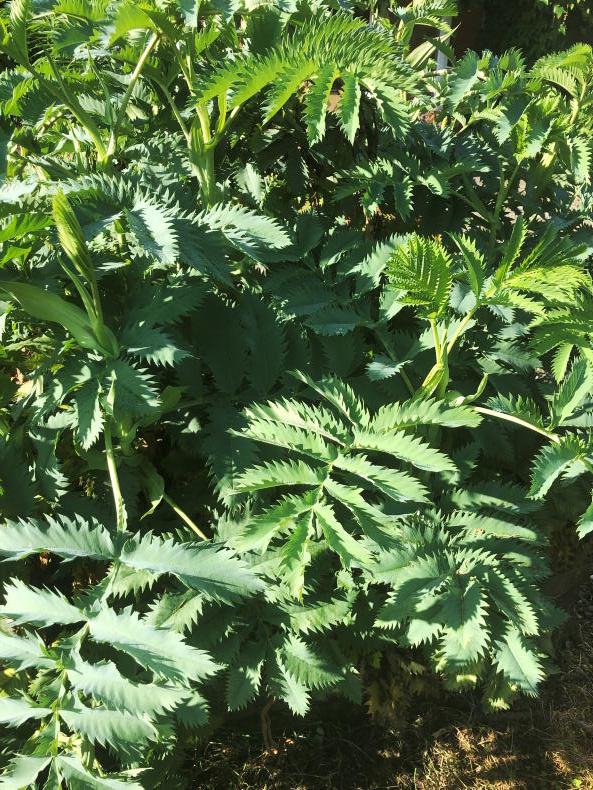
Melianthus back from the dead.
If you are into gardening I do think you need to give it a break a few times during the year. It refreshes you and brings gardening back to being a hobby rather than an endless list of jobs to do.
I did manage to walk around the garden a few times this past month and I always brought a secateurs with me.
You might think you are doing nothing, but with a secateurs in hand you can deadhead and trim as you please, which tidies things up no end. If you are lucky you will get a second flush of flowers into the bargain.
Confusion over dahlias
One plant I have to be careful dead-heading is the dahlia. I can get very confused between the emerging and the spent flowers. The trick in telling them apart is to think of the emerging flower as a button and the spent flower as a lantern.
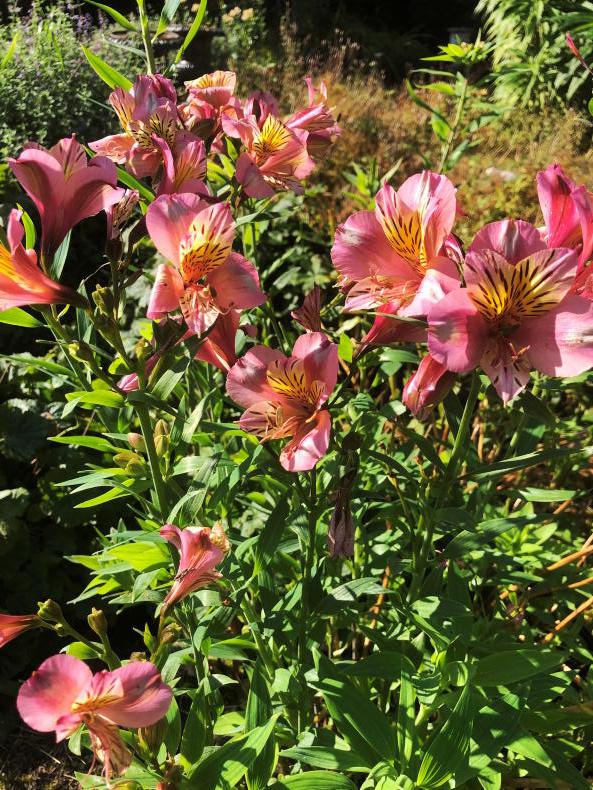
Alstroemeria - second flush
All the deadheading paid off and the second flush of roses, dianthus, alstoemeria and nepeta are enjoying the sunshine of early September. The hydrangeas especially ‘Annabelle’ are looking well and give great depth to the garden. The sedums, Japanese anemones and rudbeckia ‘godlsturm’ add to the colour not forgetting the crocosmia and the nasturtiums. And there’s still more to look forward to.
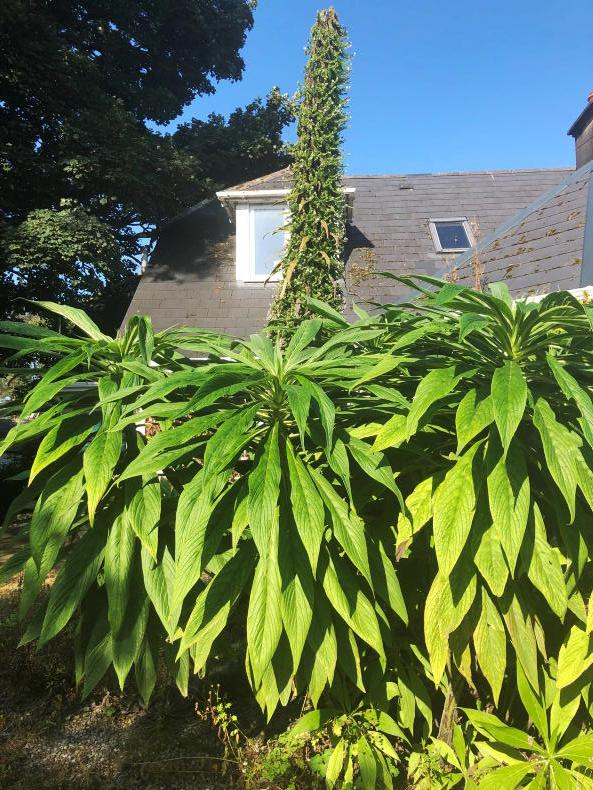
Echium still standing tall.
Birds in and out
The little birds have begun eating the rosa rugosa hips and the swallows and swifts are gathering and will be heading south any day now. And for the second year running we have a barn owl making itself at home in a derelict house not 30m from the kitchen door.
It really is a ghostly looking bird and the sound it makes would frighten the life out of you. I’d love to hear from readers who have barn owls in their yard.
To the prairies and the wild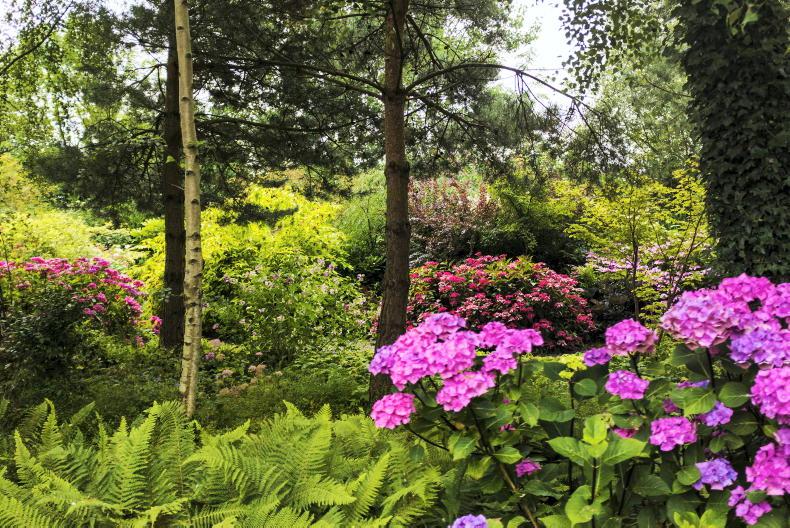
Ratoath Garden Centre. \ Ferdia Mooney
Wildflower meadows are all the rage now and while they are very pretty it is vital that you only buy native Irish seed and that you buy seed from a reputable source. Another form of this naturalistic look is prairie planting. Simplicity defines the grass or prairie garden. Here it’s all about movement, rustling sounds and changing shades of colour through the year
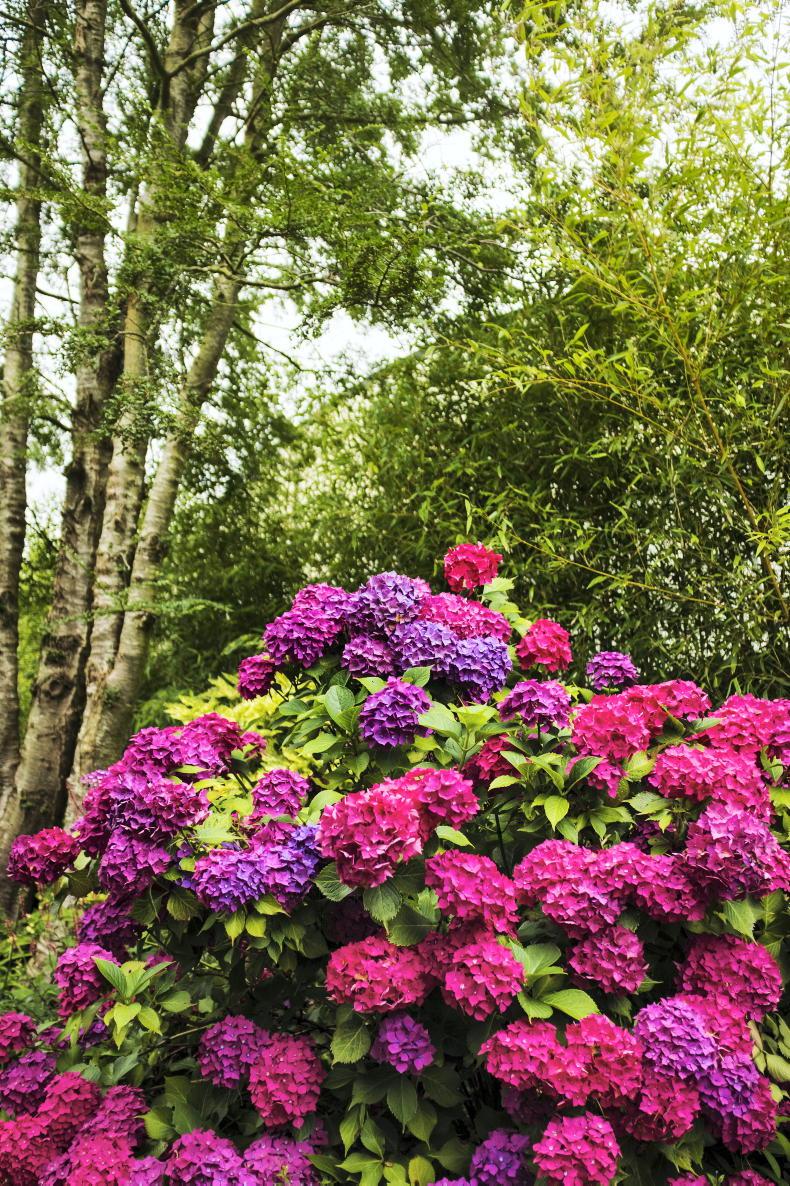
Ratoath Garden Centre is run by John Lord. \ Ferdia Mooney
Getting this look isn’t easy as for best results you need to create a border that’s about 40ft long and 10ft wide. Not everyone has that much space but you can always give a corner over to this planting scheme. The prairie border looks great at this time of year when the grasses come into their own. So careful that thought has to go into what to plant in these beds so as to get results for spring and summer.
What works?
Suitable perennials include sunflowers, purple loosestrife, Joe Pye weed for good stem colour and strong upright habit and veronicastrum for its tall elegant spikiness. Add in grasses such as miscanthus and molinia – the purple moor grass. Astilbe chinensis is another good one as it has a nice informal habit and tolerates most Irish soils.
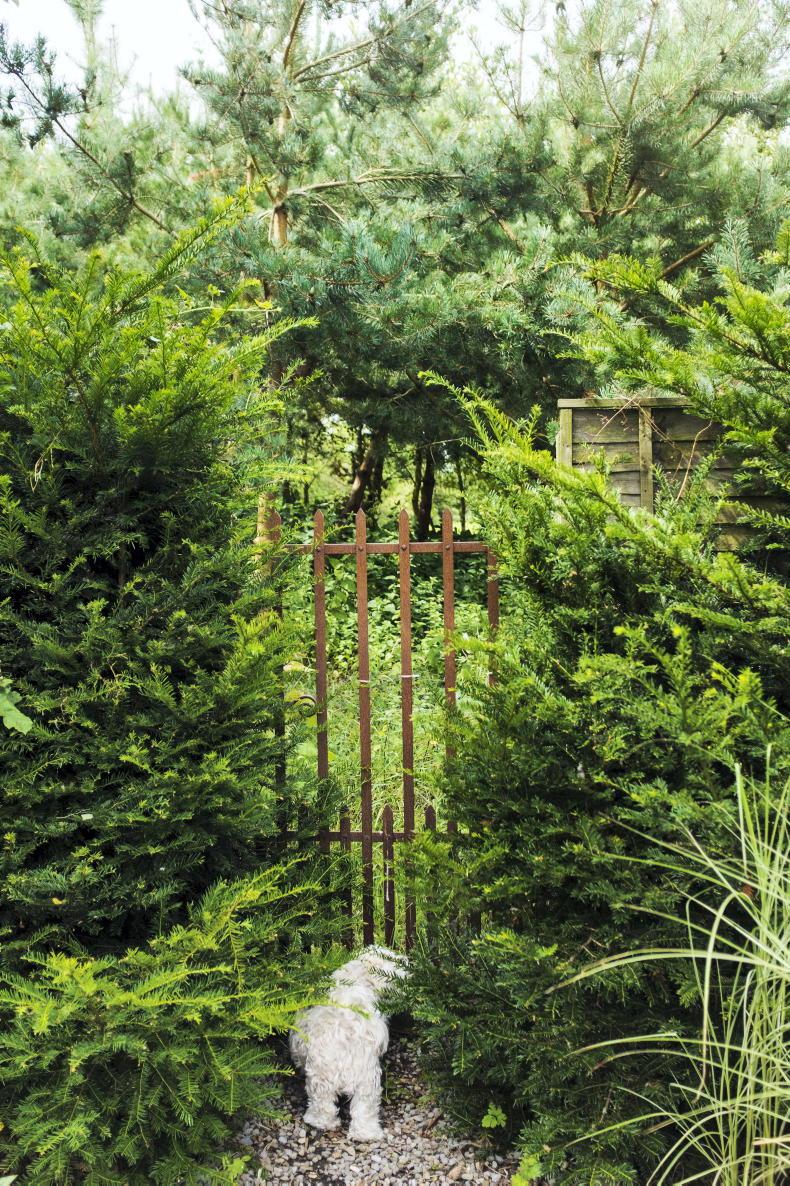
These aren’t the type of perennials that need staking. The planting looks better when six to eight of the same perennials are grown together. As ever use the shortest perennials to the front and very tall plants, and they are very tall, at the back of the border. The least bit of wind creates great movement, which is one of the attractions of this planting style.
Good examples
You can see great examples of this type of planting at John Lord’s garden center at Ratoath, Co Dublin, Fancroft Garden, Co Tipperary and Blarney Castle, Co Cork. John Lord mulches with a thick layer of mini chip bark – it looks well and keeps the weeds down.
Even with these densely packed borders, John reckons he does no more than three hours gardening a week so easy care plants are essential. On St Patrick’s Day he cuts the whole thing to the ground using a heavy-duty hedge cutter and removes all the debris. In late spring lift, split, replant and water in newly divided plants.
For more information from John call 01-8256 678 or email ratoathgardencentre@hotmail.com or you can join John’s 9,000 followers on YouTube at John Lord’s Secret Garden for gardening tips.
Time to...
Go to the sales. Located in the foothills of the Dublin Mountains the annual 20% sale at Mount Venus Nursery runs from 18-26 September. This is a no frills nursery where perennials, shrubs and trees are the only attraction. For opening times check mountvenusnursery.com
Think autumn colour ‘Pheasant Berry’ as a good example and you’ll often find it in old gardens as it was used as cover for pheasants. It’s easy to propagate from seed and ‘Golden Lantern’ with its bright gold foliage is a high impact variety.
Check out an online gardening course with well-known organic gardener Klaus Laitenberger which starts on the 3rd week of September and runs every fortnight until mid-February. The classes last 40 minutes and are filmed and streamed live. The cost of the 10 sessions is €70. If you miss a session you can watch it at a later stage. It’s aimed at complete beginners and semi-advanced gardeners who want to learn how to grow some of their own food – vegetables, salads, herbs and fruit. Also suitable if you want to garden with children. Contact klauscourse@gmail.com for course details and booking information.
I have to admit, I did very little work in the garden since talking with you last. The fine weather drew us to Ballybunion to enjoy its lovely beaches, even when overcast. It’s about 40 minutes from home and when the children were little we went there regularly.
I always wanted to rent a caravan for a week or two and really get value out of the place, but sure we never got round to it.

Melianthus back from the dead.
If you are into gardening I do think you need to give it a break a few times during the year. It refreshes you and brings gardening back to being a hobby rather than an endless list of jobs to do.
I did manage to walk around the garden a few times this past month and I always brought a secateurs with me.
You might think you are doing nothing, but with a secateurs in hand you can deadhead and trim as you please, which tidies things up no end. If you are lucky you will get a second flush of flowers into the bargain.
Confusion over dahlias
One plant I have to be careful dead-heading is the dahlia. I can get very confused between the emerging and the spent flowers. The trick in telling them apart is to think of the emerging flower as a button and the spent flower as a lantern.

Alstroemeria - second flush
All the deadheading paid off and the second flush of roses, dianthus, alstoemeria and nepeta are enjoying the sunshine of early September. The hydrangeas especially ‘Annabelle’ are looking well and give great depth to the garden. The sedums, Japanese anemones and rudbeckia ‘godlsturm’ add to the colour not forgetting the crocosmia and the nasturtiums. And there’s still more to look forward to.

Echium still standing tall.
Birds in and out
The little birds have begun eating the rosa rugosa hips and the swallows and swifts are gathering and will be heading south any day now. And for the second year running we have a barn owl making itself at home in a derelict house not 30m from the kitchen door.
It really is a ghostly looking bird and the sound it makes would frighten the life out of you. I’d love to hear from readers who have barn owls in their yard.
To the prairies and the wild
Ratoath Garden Centre. \ Ferdia Mooney
Wildflower meadows are all the rage now and while they are very pretty it is vital that you only buy native Irish seed and that you buy seed from a reputable source. Another form of this naturalistic look is prairie planting. Simplicity defines the grass or prairie garden. Here it’s all about movement, rustling sounds and changing shades of colour through the year

Ratoath Garden Centre is run by John Lord. \ Ferdia Mooney
Getting this look isn’t easy as for best results you need to create a border that’s about 40ft long and 10ft wide. Not everyone has that much space but you can always give a corner over to this planting scheme. The prairie border looks great at this time of year when the grasses come into their own. So careful that thought has to go into what to plant in these beds so as to get results for spring and summer.
What works?
Suitable perennials include sunflowers, purple loosestrife, Joe Pye weed for good stem colour and strong upright habit and veronicastrum for its tall elegant spikiness. Add in grasses such as miscanthus and molinia – the purple moor grass. Astilbe chinensis is another good one as it has a nice informal habit and tolerates most Irish soils.

These aren’t the type of perennials that need staking. The planting looks better when six to eight of the same perennials are grown together. As ever use the shortest perennials to the front and very tall plants, and they are very tall, at the back of the border. The least bit of wind creates great movement, which is one of the attractions of this planting style.
Good examples
You can see great examples of this type of planting at John Lord’s garden center at Ratoath, Co Dublin, Fancroft Garden, Co Tipperary and Blarney Castle, Co Cork. John Lord mulches with a thick layer of mini chip bark – it looks well and keeps the weeds down.
Even with these densely packed borders, John reckons he does no more than three hours gardening a week so easy care plants are essential. On St Patrick’s Day he cuts the whole thing to the ground using a heavy-duty hedge cutter and removes all the debris. In late spring lift, split, replant and water in newly divided plants.
For more information from John call 01-8256 678 or email ratoathgardencentre@hotmail.com or you can join John’s 9,000 followers on YouTube at John Lord’s Secret Garden for gardening tips.
Time to...
Go to the sales. Located in the foothills of the Dublin Mountains the annual 20% sale at Mount Venus Nursery runs from 18-26 September. This is a no frills nursery where perennials, shrubs and trees are the only attraction. For opening times check mountvenusnursery.com
Think autumn colour ‘Pheasant Berry’ as a good example and you’ll often find it in old gardens as it was used as cover for pheasants. It’s easy to propagate from seed and ‘Golden Lantern’ with its bright gold foliage is a high impact variety.
Check out an online gardening course with well-known organic gardener Klaus Laitenberger which starts on the 3rd week of September and runs every fortnight until mid-February. The classes last 40 minutes and are filmed and streamed live. The cost of the 10 sessions is €70. If you miss a session you can watch it at a later stage. It’s aimed at complete beginners and semi-advanced gardeners who want to learn how to grow some of their own food – vegetables, salads, herbs and fruit. Also suitable if you want to garden with children. Contact klauscourse@gmail.com for course details and booking information.













 This is a subscriber-only article
This is a subscriber-only article










SHARING OPTIONS: